What does a ear tagger do?
An ear tagger is a tool used to tag the ears of livestock animals such as cattle, sheep, and pigs. The tags are usually made of plastic or metal and are used to identify individual animals. The ear tag contains information such as the animal's identification number, date of birth, breed, and owner's details. The process of tagging is important for tracking and monitoring the health and movement of the animals, as well as for ensuring traceability in the food supply chain. The ear tagger is designed to be safe and efficient, and is typically used by trained professionals who follow strict guidelines to minimize any discomfort or harm to the animals.
how to use ear tag applicator ?
To use an ear tag applicator, first, select the appropriate size and type of ear tag for the animal you are tagging. Then, load the ear tag into the applicator according to the manufacturer's instructions. Next, approach the animal and firmly grasp the ear to be tagged. Place the applicator over the base of the ear, making sure the ear tag is positioned correctly. Squeeze the handle of the applicator to apply pressure, which will cause the ear tag to pierce through the ear and attach securely. Release the handle and remove the applicator from the ear. Finally, inspect the ear tag to ensure it is attached properly and record any necessary information about the animal's identification.
how to use a ear tagger ?
To use an ear tagger, first, select the appropriate ear tag for the animal's ear size and type. Then, grasp the ear of the animal and position the ear tagger over the ear, with the ear tag in the correct location. Squeeze the handles of the ear tagger to apply pressure and pierce the ear with the tag. Release the handles to allow the ear tag to close around the ear. Finally, check that the ear tag is securely attached and that the animal is not experiencing any discomfort or bleeding.
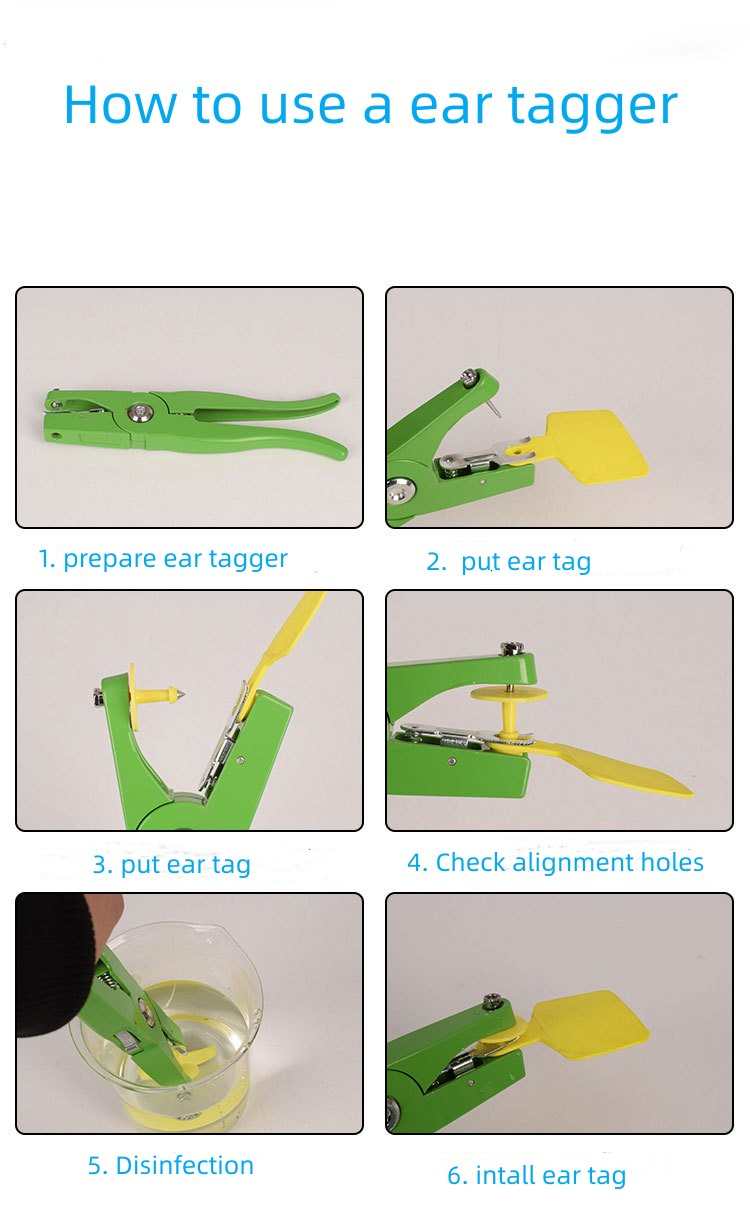
best ear tag applicator
The best ear tag applicator is an essential tool for farmers and ranchers who need to identify and track their livestock. It is a device that allows for quick and easy application of ear tags, which are small plastic tags that are attached to the ear of an animal for identification purposes. With the right ear tag applicator, farmers can efficiently tag their animals without causing unnecessary stress or discomfort to the animal. The best ear tag applicators are durable, easy to use, and designed to fit a variety of ear tag sizes and shapes. They are also designed to be comfortable for the user, with ergonomic handles and smooth, efficient action. Whether you are a small-scale farmer or a large rancher, investing in the best ear tag applicator is a wise choice that will save you time and effort in the long run.
In addition, using ear tags is a common practice in the livestock industry as it allows for easy identification of individual animals. This is important for keeping track of an animal's medical history, breeding records, and ownership. Ear tags can also help farmers and ranchers manage their herds more effectively, by allowing them to identify and separate animals based on their age, sex, or health status.
However, applying ear tags can be a challenging and time-consuming task, especially if done manually. This is where the best ear tag applicator comes in handy. With its efficient and precise application, it reduces the risk of injury to the animal and the farmer. It also ensures that the ear tag is securely attached to the animal's ear, preventing it from falling off or getting lost.
Moreover, the best ear tag applicator is made of high-quality materials that ensure its durability and longevity. It can withstand the wear and tear of frequent use in harsh farming conditions, making it a valuable investment for any livestock farmer or rancher.
In conclusion, the best ear tag applicator is an essential tool for any farmer or rancher who values efficiency, accuracy, and animal welfare. It is a wise investment that can save time, effort, and money in the long run while ensuring that livestock is properly identified and managed.
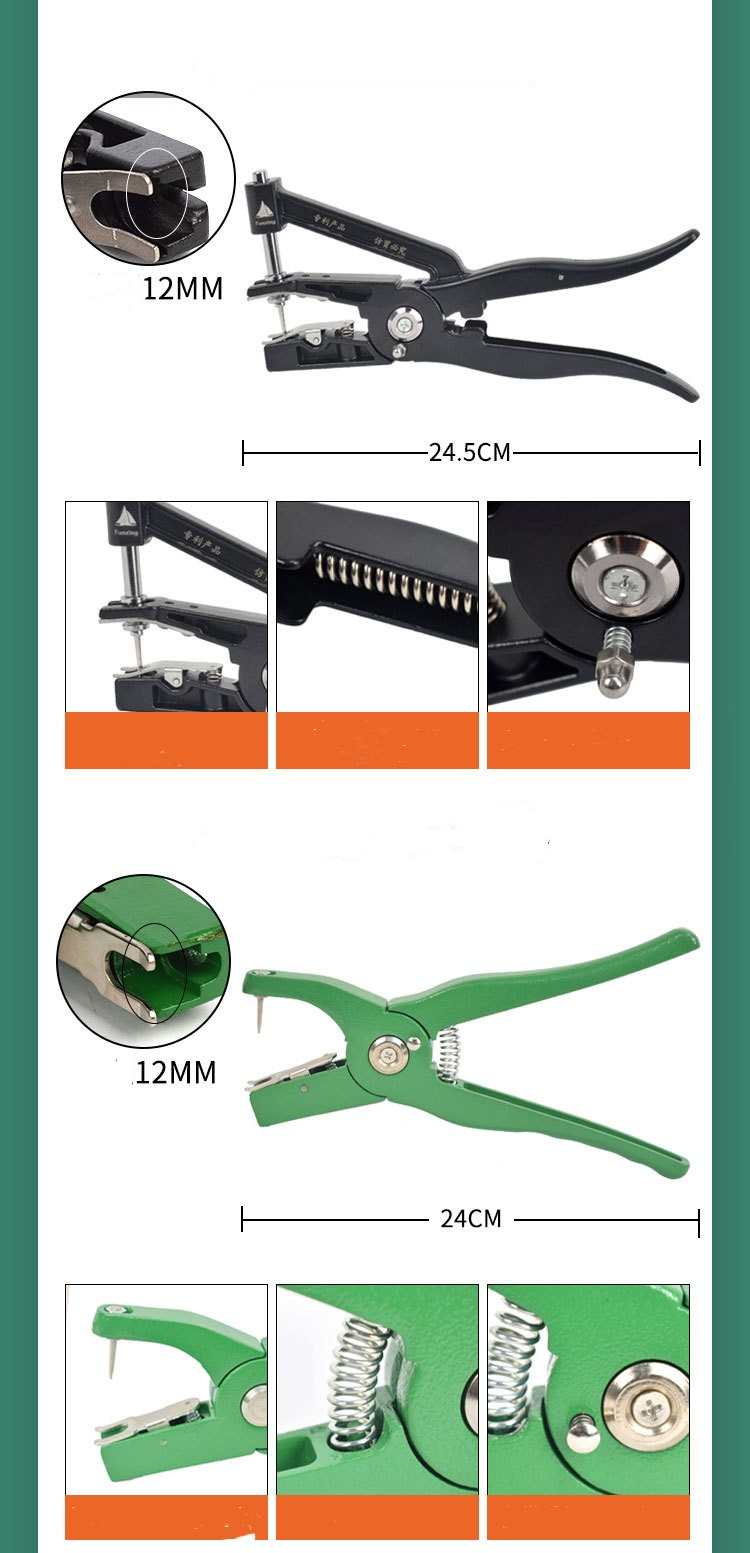
Ear tag applicator price
The ear tag applicator price can vary depending on the brand, model, and supplier. Some applicators may be more expensive due to their durability, precision, or additional features. It is important to consider the cost of the applicator in relation to its quality and functionality, as a cheaper option may not necessarily be the best value in the long run. Additionally, some suppliers may offer discounts or promotions on ear tag applicators, so it is worth shopping around to find the best deal.
When it comes to purchasing an ear tag applicator, there are several factors that can affect the price. Firstly, the brand and model of the applicator can influence its cost, with some well-known brands commanding a higher price due to their reputation for quality and reliability. Additionally, certain models may be more advanced or innovative, incorporating features such as ergonomic design or digital displays, which can also increase their price tag.
Another important consideration when buying an ear tag applicator is its durability and precision. A more robust and sturdy applicator may be more expensive, but it can also last longer and withstand more wear and tear, making it a worthwhile investment in the long run. Similarly, an applicator with greater precision can ensure that the ear tag is applied accurately and securely, reducing the risk of it falling off or causing discomfort to the animal.
Of course, cost is not the only factor to consider when purchasing an ear tag applicator. It is also important to evaluate the quality and functionality of the product, and to ensure that it meets your specific needs and requirements. This may involve researching different models and brands, reading reviews from other users, and seeking advice from experts in the field.
Finally, it is worth noting that there may be opportunities to save money on ear tag applicators by shopping around and comparing prices from different suppliers. Some suppliers may offer discounts or promotions on certain models or brands, or may be willing to negotiate on price for bulk orders. By taking the time to research your options and weigh up the pros and cons of different products, you can find an ear tag applicator that meets your needs and budget.
How to ear tag with a Z tagger
To ear tag with a Z tagger, first, prepare the animal by restraining it safely and securely. Then, select the appropriate size and color of the ear tag for the animal. Next, load the Z tagger with the ear tag and ensure that it is properly aligned. Place the tagger on the ear at the desired location and apply firm pressure to pierce the ear and attach the tag. Finally, release the animal and ensure that the tag is securely attached and not causing any discomfort or irritation.
Before ear tagging an animal with a Z tagger, it is crucial to ensure that the animal is restrained safely and securely to prevent any harm or injury. Once the animal is in a secure position, it is important to choose the right size and color of the ear tag for the specific animal to ensure that it fits comfortably and is easily visible. Loading the Z tagger with the ear tag and aligning it correctly is essential for a successful ear tagging process. The tagger should be placed on the ear at the desired location, and firm pressure should be applied to pierce the ear and attach the tag. It is important to ensure that the tag is securely attached and not causing any discomfort or irritation to the animal. Finally, releasing the animal from restraint and observing it for any signs of discomfort or irritation is necessary to ensure a successful and safe ear tagging process.
What do you use a ear tagger for ?
A ear tagger is a tool used to apply identification tags to the ears of livestock animals such as cattle, sheep, and pigs. These tags are used to identify individual animals for record-keeping purposes, tracking medical treatments, and monitoring their growth and development. The tagger works by applying pressure to the ear, which allows the tag to be inserted through a small hole in the ear. The tag is then secured in place, typically with a special clip or fastener. Ear tagging is a common practice in the livestock industry and is often required by law for traceability and disease control purposes.
Ear tagging is a crucial process in the livestock industry as it helps farmers keep track of their animals and maintain accurate records. These tags can be used to differentiate between animals and monitor their individual progress. The ear tagger tool is designed to make the process of tagging animals quick and efficient. The tool applies pressure to the ear, allowing the tag to be inserted through a small hole. This process is relatively painless for the animal and does not harm their hearing or balance. Once the tag is inserted, it is secured in place using a special clip or fastener, ensuring it does not fall off. The use of ear tags is also important for disease control, as it allows for the tracing of infected animals and helps prevent the spread of diseases. Overall, ear tagging is an essential practice in the livestock industry, providing a reliable way to identify and track individual animals for various purposes.
What does a ear tagger ?
A ear tagger is a tool used for placing identification tags on the ears of livestock animals such as cows, sheep, and pigs. These tags contain important information about the animal such as its identification number, date of birth, and health records. The process of ear tagging is important for tracking and managing the health and well-being of livestock animals, as well as for ensuring the safety and quality of the food products they produce. Ear taggers come in various sizes and shapes, and can be manual or automatic, depending on the specific needs of the farmer or rancher.
The use of ear tags has become a common practice in the livestock industry, as it provides a simple and effective way to keep track of individual animals. Ear tagging is typically done when the animal is still young, usually within the first few weeks of life. This allows for the tag to be properly placed and for the animal to become accustomed to it as it grows.
The information contained on the ear tag is crucial for proper animal management. It allows farmers and ranchers to keep track of an animal's age, breeding history, and medical records. This information is especially important when it comes to breeding, as it helps ensure that animals are not bred too young or too old.
Ear taggers come in a variety of styles and sizes to accommodate different types of animals. Manual ear taggers require the user to physically squeeze the tag onto the ear of the animal, while automatic taggers use a pneumatic or hydraulic system to apply the tag. Some ear taggers are also designed to be used with specific types of tags, such as RFID tags, which can be read electronically.
Overall, the use of ear taggers is an important tool for livestock farmers and ranchers. It allows for better animal management, which leads to healthier animals and higher quality food products.
What does a ear tagger gun ?
What does an ear tagger gun do? An ear tagger gun is a tool used to attach identification tags to the ears of livestock animals such as cows, sheep, and pigs. These tags contain important information such as the animal's identification number, breed, and date of birth. The ear tagger gun is designed to quickly and efficiently pierce the ear of the animal and attach the tag securely, ensuring that the animal can be easily identified and tracked throughout its life. This is an important tool for farmers and ranchers who need to keep track of their animals for breeding, health, and marketing purposes.
Without the use of an ear tagger gun, it would be difficult for farmers and ranchers to differentiate between their livestock animals, especially when they are in large groups. The tags serve as a permanent form of identification, as they are made of durable materials such as plastic or metal. The ear tagger gun is designed to be safe and humane for the animals, as it is equipped with a special mechanism that prevents the tag from causing excessive pain or discomfort. In addition to identification, ear tags can also be used to monitor the health and well-being of the animals, as some tags can be equipped with sensors that track important data such as body temperature and activity levels. Overall, the ear tagger gun is an essential tool for livestock management, providing farmers and ranchers with a reliable method of identifying and tracking their animals.
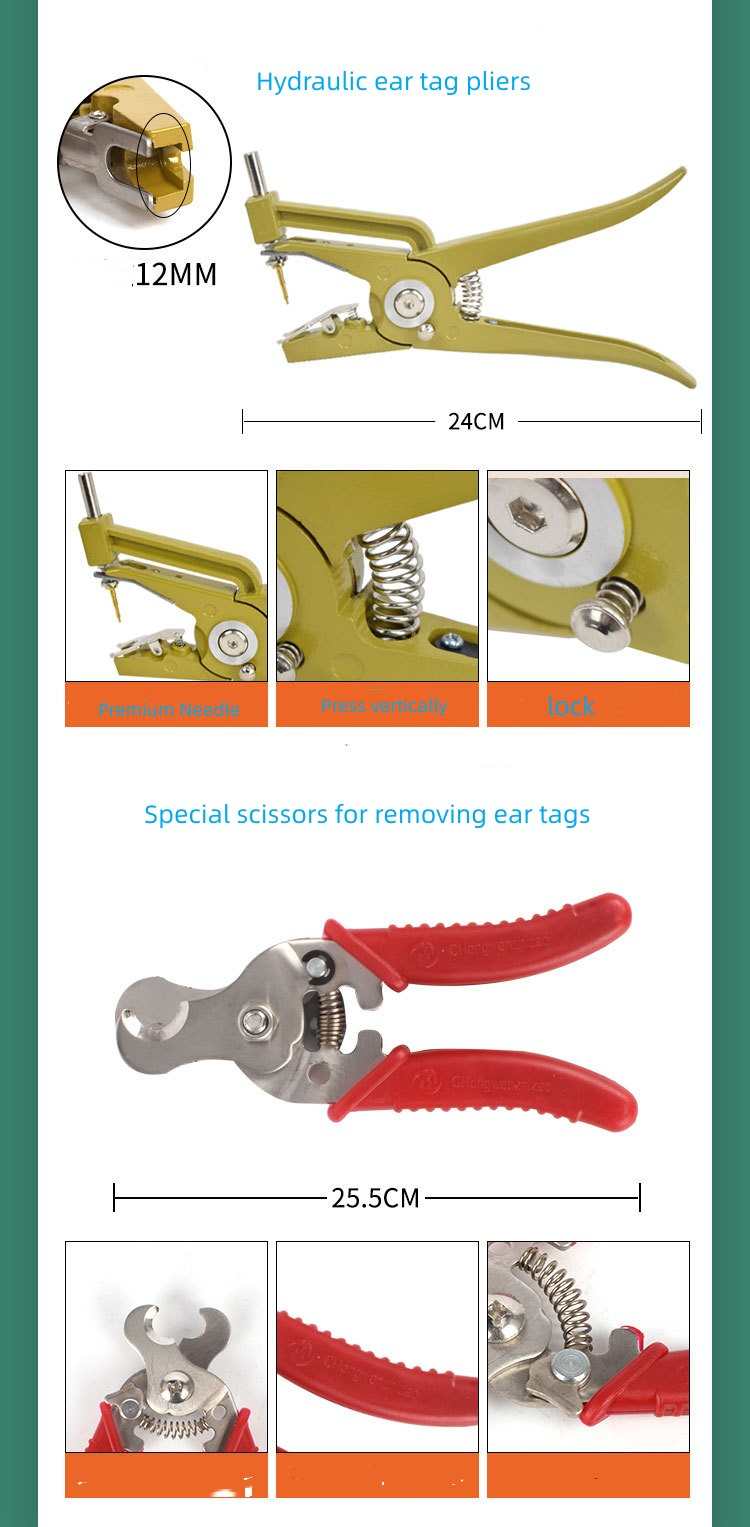
What is a ear tagger
A ear tagger is a tool used to apply ear tags to livestock animals, such as cows, sheep, and pigs. The ear tag serves as a visual identification marker for the animal, containing important information such as the animal's identification number, breed, and date of birth. The tag is typically made of plastic or metal and is attached to the animal's ear using the ear tagger. The process of tagging is important for tracking and managing the health and well-being of livestock animals, as well as for ensuring proper record-keeping and traceability in the food supply chain.
The ear tagger is a simple yet essential tool used by farmers and ranchers to apply ear tags to their livestock animals. These ear tags serve as a vital identification marker for the animals, allowing farmers to keep track of each animal's individual information, such as their identification number, breed, and date of birth. The ear tag itself is typically made of either plastic or metal and is attached to the animal's ear using the ear tagger.
The process of tagging is not only important for tracking and managing the health and well-being of livestock animals, but also for ensuring proper record-keeping and traceability in the food supply chain. By having a clear and concise record of each animal's information, farmers and ranchers can easily track the animal's movements, medication history, and other important data. This information is crucial for ensuring the safety and quality of the food that is produced from these animals.
In addition to providing important information about the animal, ear tags can also serve as a deterrent to theft and help identify lost or stolen animals. By having a unique identification number on each ear tag, it makes it easier for farmers and ranchers to report any missing animals and quickly identify them if they are found.
Overall, the use of ear taggers and ear tags is an essential aspect of livestock management and plays a crucial role in ensuring the health and safety of both the animals and the consumers who rely on them for food.
Why are Cows tagged ?
Cows are tagged for identification purposes. These tags are usually placed on the ears of the cows and they contain important information such as the cow's age, breed, and health status. This helps farmers keep track of their cows and monitor their health and productivity. Additionally, tagging cows is important for traceability purposes, especially in the case of disease outbreaks. In the event of a disease outbreak, it is important to be able to track the movement of the cows to prevent the spread of the disease to other farms. Therefore, tagging cows is an important practice in the agriculture industry.
Tagging cows also helps consumers to know where their meat and dairy products come from. By scanning the tags, consumers can access information about the origin, quality, and safety of the products they buy. This can increase consumer confidence and satisfaction in the agriculture industry.
However, tagging cows also has some disadvantages. Some cows may experience pain or discomfort when the tags are applied or removed. Some tags may also get lost or damaged over time, making them ineffective or inaccurate. Moreover, some people may have ethical concerns about tagging cows as a form of animal exploitation or invasion of privacy.
Another benefit of tagging cows is that it can improve animal welfare and management. By using tags that can transmit data wirelessly, farmers can monitor the cows' behavior, activity, and location remotely. This can help farmers detect any signs of stress, illness, or injury in the cows and provide timely treatment. It can also help farmers optimize the cows' feeding, breeding, and milking schedules to enhance their productivity and well-being.
Farmers tag their cows using a special tool called an applicator that attaches a stud and a button to the cow's ear. The stud and the button are the two halves of the tag that contain the identification information. The applicator has a needle that pierces the ear and inserts the stud, while the button snaps on the other side of the ear to secure the tag.
Before tagging a cow, farmers need to clean the cow's ear and the applicator with rubbing alcohol to reduce the risk of infection. They also need to select the best type of tag for their cattle, such as plastic, metal, or electronic tags. Different colors and numbers can be used to indicate different information about the cows, such as gender, age, breed, health status, etc.
Tagging a cow does not hurt the animal much, but it may feel a slight pinch when the needle goes through the ear. The cow may also shake its head or scratch its ear after being tagged, but this is normal and should subside soon.
Why do Cows have ear tags
If you have ever seen a cow, you may have noticed that it has a tag on its ear. This tag is not a fashion accessory, but a vital tool for identification and management of cattle. In this article, we will explain why cows have ear tags, how they are applied, and what benefits they offer to farmers and consumers.
Ear tags are small plastic or metal devices that are attached to the cow's ear using a special applicator. The tag has a number or a barcode that can be read by a scanner or a computer. The tag can also contain other information about the cow, such as its age, breed, health status, vaccination history, and more.
Ear tags help farmers keep track of their cows and monitor their health and productivity. By scanning the tags, farmers can access important data about each cow and record it in their database. This can help them optimize their feeding, breeding, milking, and veterinary schedules. It can also help them detect any signs of illness or injury in their cows and provide timely treatment.
Ear tags also help farmers with traceability and quality assurance. In the event of a disease outbreak or a food recall, farmers can use the tags to trace the movement and origin of their cows and prevent the spread of the disease to other farms or consumers. Ear tags can also help consumers know where their meat and dairy products come from and how they are produced. By scanning the tags, consumers can access information about the quality, safety, and sustainability of the products they buy.
There are different types of ear tags available for cattle, such as plastic, metal, or electronic tags. Plastic tags are the most common and cheapest option, but they can fade or fall off over time. Metal tags are more durable and resistant to damage, but they can rust or corrode. Electronic tags are the most advanced and expensive option, but they can transmit data wirelessly and store more information than other types of tags.
Ear tagging is a simple and painless procedure that does not harm the cow. The cow may feel a slight pinch when the tag is applied, but it will quickly get used to it. The cow may also shake its head or scratch its ear after being tagged, but this is normal and should subside soon. Ear tagging is usually done shortly after birth, during weaning, or before branding.
Ear tagging is an essential practice in the cattle industry that benefits both farmers and consumers. It helps farmers identify and manage their cows more efficiently and effectively. It also helps consumers know more about the products they consume and trust their quality and safety. Ear tagging is a win-win situation for everyone involved.
Why do Cows have tags on their ears
If you have ever seen a cow, you may have noticed that it has a tag on its ear. This tag is not a fashion accessory, but a vital tool for identification and management of cattle. In this article, we will explain why cows have ear tags, how they are applied, and what benefits they offer to farmers and consumers.
Ear tags are small plastic or metal devices that are attached to the cow's ear using a special applicator. The tag has a number or a barcode that can be read by a scanner or a computer. The tag can also contain other information about the cow, such as its age, breed, health status, vaccination history, and more.
Ear tags help farmers keep track of their cows and monitor their health and productivity. By scanning the tags, farmers can access important data about each cow and record it in their database. This can help them optimize their feeding, breeding, milking, and veterinary schedules. It can also help them detect any signs of illness or injury in their cows and provide timely treatment.
Ear tags also help farmers with traceability and quality assurance. In the event of a disease outbreak or a food recall, farmers can use the tags to trace the movement and origin of their cows and prevent the spread of the disease to other farms or consumers. Ear tags can also help consumers know where their meat and dairy products come from and how they are produced. By scanning the tags, consumers can access information about the quality, safety, and sustainability of the products they buy.
There are different types of ear tags available for cattle, such as plastic, metal, or electronic tags. Plastic tags are the most common and cheapest option, but they can fade or fall off over time. Metal tags are more durable and resistant to damage, but they can rust or corrode. Electronic tags are the most advanced and expensive option, but they can transmit data wirelessly and store more information than other types of tags.
Ear tagging is a simple and painless procedure that does not harm the cow. The cow may feel a slight pinch when the tag is applied, but it will quickly get used to it. The cow may also shake its head or scratch its ear after being tagged, but this is normal and should subside soon. Ear tagging is usually done shortly after birth, during weaning, or before branding.
Ear tagging is an essential practice in the cattle industry that benefits both farmers and consumers. It helps farmers identify and manage their cows more efficiently and effectively. It also helps consumers know more about the products they consume and trust their quality and safety. Ear tagging is a win-win situation for everyone involved.
Ear tag pliers metal function?
Ear tag pliers are essential tools for livestock farmers who need to identify their animals with ear tags. Ear tags are small plastic or metal labels that are attached to the ears of animals such as cattle, sheep, pigs, goats, etc. Ear tags can contain information such as the animal's ID number, breed, sex, date of birth, health status, owner's name, etc. Ear tags help farmers to keep track of their animals, manage their health and productivity, and comply with regulations.
Ear tag pliers are used to install and remove ear tags from the animals' ears. They are usually made of metal, such as stainless steel or alloy, and have a clamp-like design that can hold the ear tag and pierce the ear with a needle. Some ear tag pliers have a lock mechanism that can open or close the clamp. Some ear tag pliers have a flip pin that can rotate 90 degrees to adjust the angle of the ear tag. Some ear tag pliers have a non-slip finish and a spring for easy grip and operation.
Ear tag pliers are widely available at DO RFID tag manufacturer. You can find different of ear tag pliers , such as Livestock Ear Tag Applicator for Cattle Sheep Pigs Cow Metal Ear tag Pliers Ear Tag Tool, Livestock Ear Tag Applicator for Cattle Sheep Pigs Cow Metal Ear tag Pliers Ear Tag Tool with Flip Pin Livestock Ear Tag Plier, Animal Ear Tag Install Tool 90 Degrees Applicator Puncher Tagger for Livestock Pigs Sheep Goats Cattles Cows, etc. You can compare the features, prices, ratings, and reviews of different ear tag pliers and choose the one that suits your needs and budget.
Ear tag pliers are easy to use and maintain. You just need to follow these steps:
Prepare the ear tag and the ear tag plier. Make sure they are clean and sterilized.
Hold the animal's head firmly and locate the desired spot on the ear. Avoid piercing blood vessels or nerves.
Insert the ear tag into the clamp of the ear tag plier. Make sure it is aligned with the needle.
Squeeze the handle of the ear tag plier firmly and quickly to pierce the ear and attach the ear tag.
Release the handle and remove the ear tag plier from the ear. Check if the ear tag is securely attached and not loose or twisted.
Repeat the process for the other ear if needed.
Clean and disinfect the ear tag plier after use. Store it in a dry and cool place.
Ear tag pliers are a must-have for livestock farmers who want to identify their animals with ear tags. They are durable, reliable, and easy to use. They can help farmers to improve their animal management and welfare.
What is ear tagger
An ear tagger is a tool that is used to insert ear tags into the ears of animals such as sheep, cattle, goats, pigs, etc. Ear tags are small pieces of plastic that have identification numbers or other information on them. They help farmers and ranchers keep track of their livestock and health records. An ear tagger has a clip that holds the ear tag and a pin that pierces the ear. It is designed to be easy to use and minimize pain and infection for the animals.
An ear tagger is an essential tool for farmers and ranchers who need to keep track of their livestock. It is specifically designed to insert ear tags into the ears of animals such as sheep, cattle, goats, pigs, and other livestock. Ear tags are small pieces of plastic that serve as identification markers for the animals. These tags usually contain important information such as the animal's name, date of birth, breed, and other health records.
The ear tagger itself consists of two main parts: a clip that holds the ear tag and a sharp pin that pierces the animal's ear. The clip is designed to securely hold the ear tag in place, while the sharp pin is used to pierce the animal's ear. The ear tagger is designed to be easy to use and to minimize pain and infection for the animals.
Using an ear tagger is an important part of livestock management. It allows farmers and ranchers to keep track of their animals and monitor their health and well-being. By using ear tags, farmers can quickly identify individual animals and keep accurate records of their movements, vaccinations, and other health-related information. The use of ear tags is also important for disease control and prevention, as it allows farmers to quickly identify and isolate sick animals before they can infect the rest of the herd.
In summary, an ear tagger is a simple yet essential tool for farmers and ranchers who need to keep track of their livestock. It is designed to be easy to use and minimize pain and infection for the animals, and it plays an important role in livestock management and disease prevention.
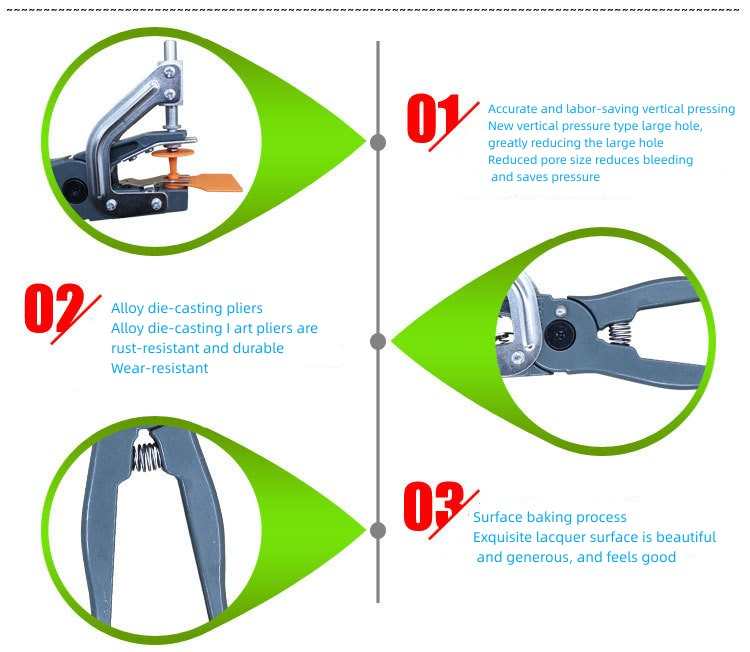
How to use an ear tag applicator?
Ear tagging is a process of attaching a plastic or metal tag to the ear of an animal for identification purposes. If it is not done right, tags can be torn out by hay twine or heavy brush, or lead to infected ears or eye irritation. Therefore, it is important to follow proper tagging techniques.
Ear tags are usually classified into one of three styles: one-piece plastic, two-piece plastic, and metal. These tags vary in shape, size, color, and method of attachment to the ear.
To use an ear tag applicator correctly, you need to:
Properly secure the animal. Movement of the animal's head may cause injury to the handler or livestock, or result in improper tagging. So calves should be eased into a chute with a head gate, halter, and/or nose lead.
Identify the tagging site. Tags should be applied in the middle-third of the ear between the upper and lower ribs. When using electronic identification (EID) tags, it is important to apply the tag with the visual panel, or male portion of the tag on the outside back of the ear with the EID button, and the female portion of the tag on the inside of the ear.
Use proper hygiene and cleanliness. Use rubbing alcohol or a disinfectant solution to clean the jaw of the applicator. Also, clean the tagging site of the animal's ear.
Place each half of the tag onto the applicator. The stud must be inserted completely onto the applicator pin and the female portion placed under the opposite clip.
Check alignment of the applicator. Do so by closing the jaw of the applicator to the point where the two halves meet. The stud should be centered with the hole.
Position the applicator in the identified tagging site on the animal's ear. Firmly close the applicator in a fast manner and release.
Examine the tag. Verify that it is positioned correctly, comfortably, and securely. Record the necessary data on the animal.
Ear tags that are large enough to be read from a distance help identify cattle quickly and easily.
An ear tagger is a tool that is used to apply ear tags to livestock animals such as sheep, cattle, goats, pigs and more. Ear tags are small pieces of plastic that have a unique identification number or code on them. They are inserted into the animal's ear using a special applicator that makes a hole and attaches the tag securely.
Ear tagging is done for various reasons, such as:
To identify individual animals and keep track of their health, breeding, production and movement records.
To comply with legal requirements and regulations for animal traceability and disease control.
To prevent theft and loss of animals by proving ownership and origin.
To improve animal management and welfare by facilitating identification and treatment.
There are different types of ear tags and applicators available in the market, depending on the animal species, size, shape and color preferences. Some of the common brands are Allflex®, Duflex®, Q-flex® and RFID Electronic ear tags¹². Ear tags can also have different features, such as:
Visual tags that have numbers, letters or symbols printed or engraved on them.
Electronic tags that have a microchip embedded in them that can store and transmit data using radio frequency identification (RFID) technology.
Tissue sampling tags that have a small blade that collects a tissue sample from the animal's ear for DNA testing or disease diagnosis.
Ear tagging is a simple and quick procedure that can be done by anyone with proper training and equipment. However, it is important to follow some best practices to ensure the safety and comfort of the animals, such as:
Choosing the right type and size of ear tag and applicator for the animal species and age.
Cleaning and disinfecting the applicator and the ear tag before and after each use.
Placing the ear tag in the correct position on the animal's ear, avoiding blood vessels, nerves and cartilage.
Applying the ear tag firmly and smoothly with one squeeze of the applicator handle.
Checking the ear tag for proper attachment and alignment after application.
Monitoring the animal for any signs of infection, inflammation or rejection of the ear tag.
Ear tagging is a common and beneficial practice that helps farmers, veterinarians and authorities to identify and manage livestock animals. An ear tagger is an essential tool that makes this process easy and efficient. By using an ear tagger correctly, you can ensure the quality and safety of your animals and products.
If you have ever seen a cow with a colorful plastic tag on its ear, you might have wondered what it is and why it is there. These tags are called ear tags, and they are used by farmers and ranchers to identify and manage their cattle. Ear tags are essential for keeping track of the health, production, movement and ownership of each animal.
Ear tags work by providing a unique identification number or code for each cow. This number can be printed or engraved on the tag, or stored in a microchip embedded in the tag. The number can be linked to a database that contains information about the cow's birth date, breed, sex, parentage, vaccinations, weight, milk yield, pregnancy status and more. By scanning or reading the ear tag, farmers can access this information quickly and easily.
Ear tags have many benefits for both the cattle and the people who raise them. Some of the benefits are:
Traceability: Ear tags allow farmers to trace the origin and history of each cow, which is important for disease control, animal welfare and food safety. Ear tags also help prevent theft and loss of cattle by proving ownership and origin.
Management: Ear tags help farmers to monitor and improve the performance and productivity of their cattle. Ear tags can help farmers to keep track of the growth, health and reproduction of each cow, and to make informed decisions about breeding, feeding, culling and marketing.
Compliance: Ear tags help farmers to comply with legal requirements and regulations for animal identification and traceability. Ear tags are part of the National Livestock Identification System (NLIS), which is a mandatory scheme for all cattle in Australia¹. Ear tags are also required for exporting cattle to other countries.
Ear tags come in different types, sizes, shapes and colors. Some of the common types are:
Visual tags: These are the most basic and common type of ear tags. They have numbers, letters or symbols printed or engraved on them. They can be read by the human eye or by a scanner.
Electronic tags: These are also known as RFID (radio frequency identification) tags. They have a microchip embedded in them that can store and transmit data using radio waves. They can be read by a scanner or a reader device.
Tissue sampling tags: These are also known as DNA tags. They have a small blade that collects a tissue sample from the cow's ear when the tag is applied. The tissue sample can be used for DNA testing or disease diagnosis.
Ear tagging is a simple and quick procedure that can be done by anyone with proper training and equipment. However, it is important to follow some best practices to ensure the safety and comfort of the cattle, such as:
Choosing the right type and size of ear tag and applicator for the cow's species and age.
Cleaning and disinfecting the applicator and the ear tag before and after each use.
Placing the ear tag in the correct position on the cow's ear, avoiding blood vessels, nerves and cartilage.
Applying the ear tag firmly and smoothly with one squeeze of the applicator handle.
Checking the ear tag for proper attachment and alignment after application.
Monitoring the cow for any signs of infection, inflammation or rejection of the ear tag.
Ear tagging is a common and beneficial practice that helps farmers and ranchers to identify and manage their cattle. An ear tagger is an essential tool that makes this process easy and efficient. By using an ear tagger correctly, you can ensure the quality and safety of your cattle and products.

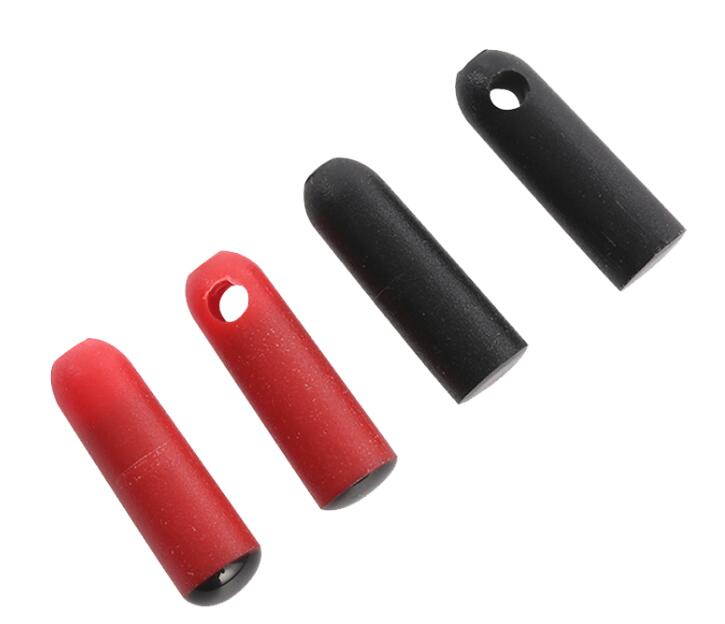
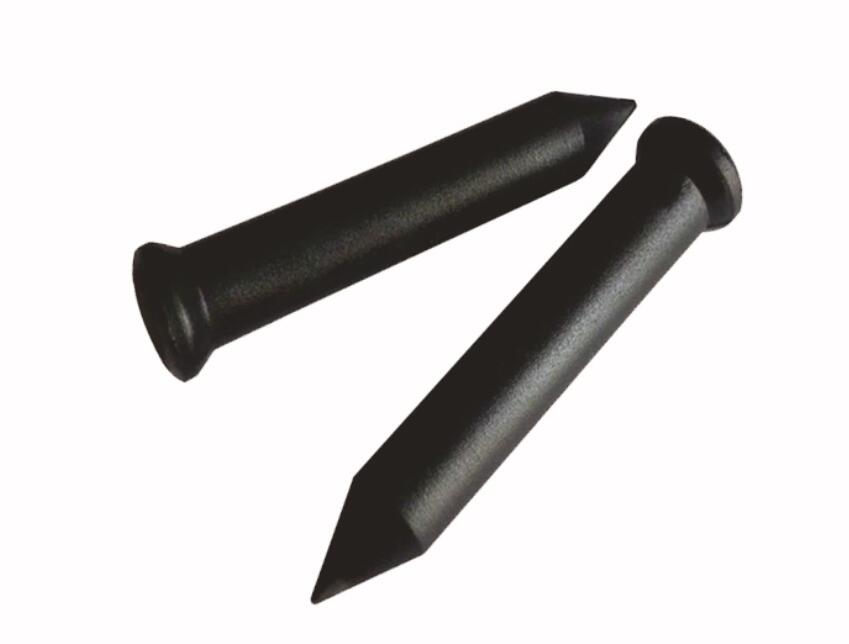
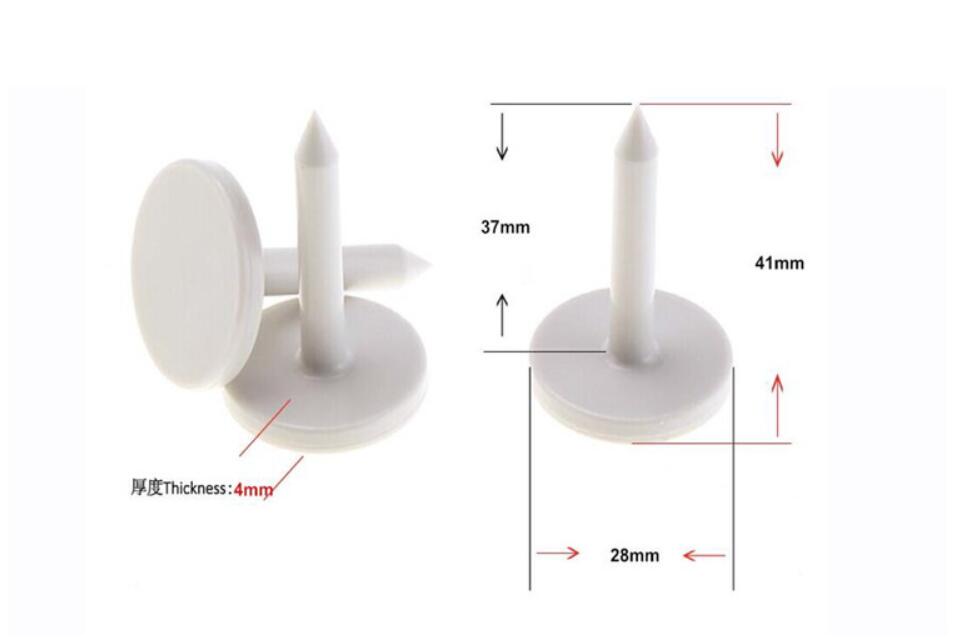
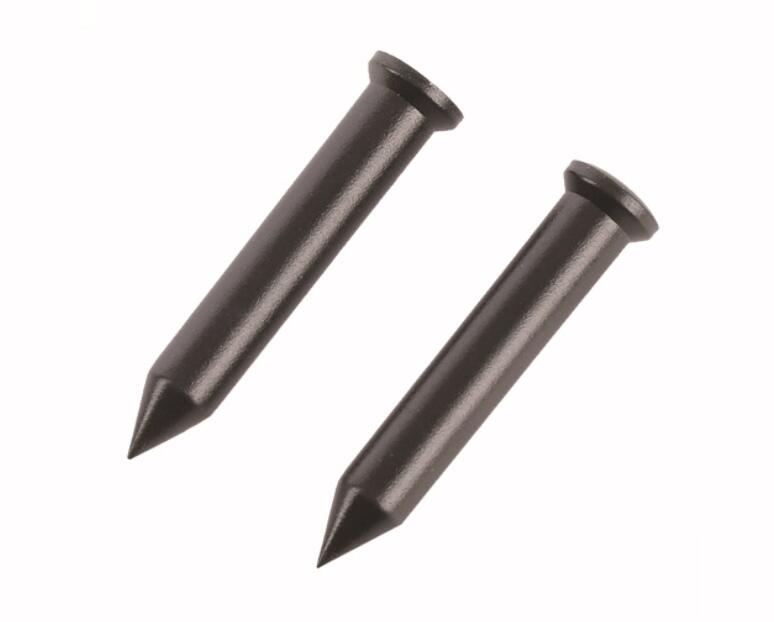
255.jpg)


